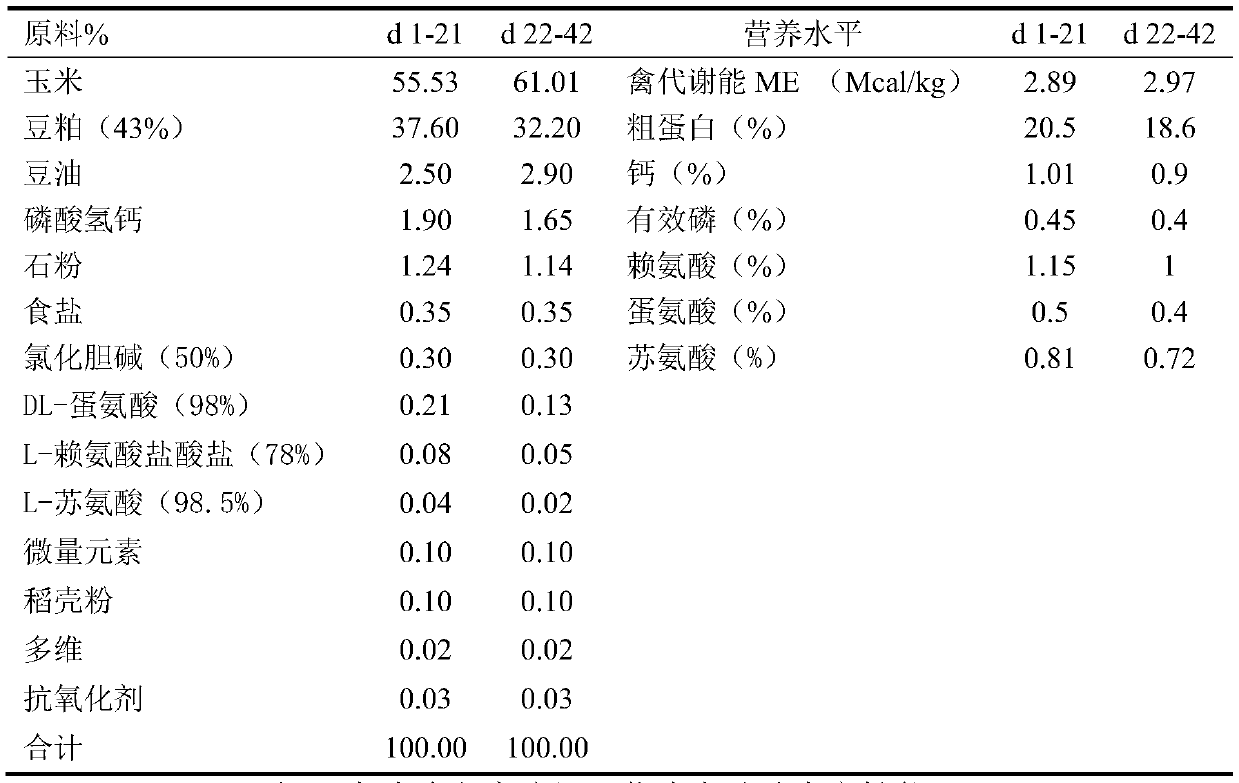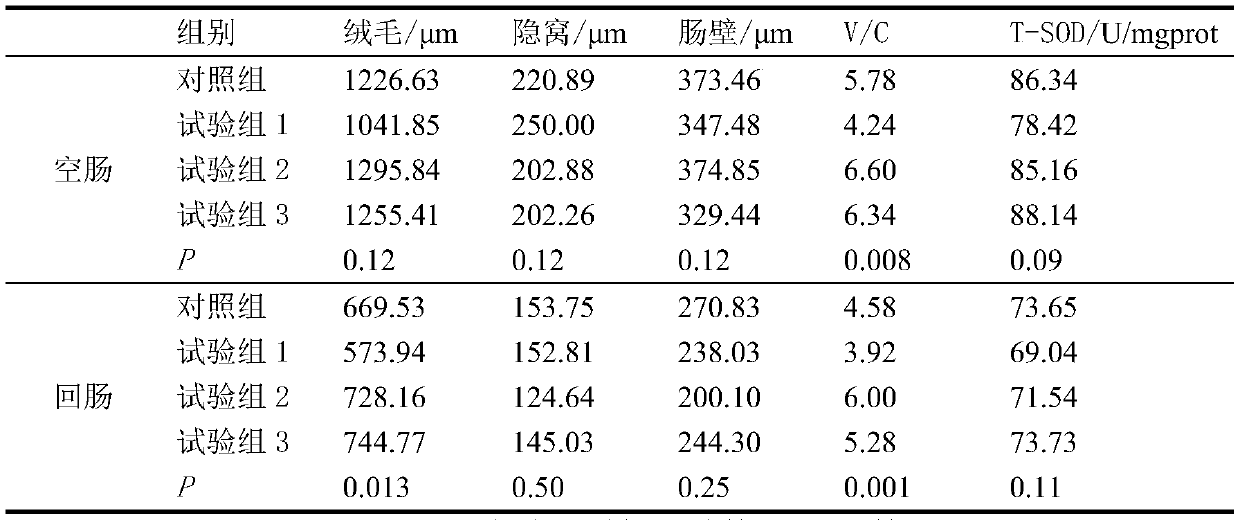Application of magnolol and/or honokiol in poultry farming
A technology of honokiol and magnolol, which is applied in the field of livestock and poultry breeding, can solve problems such as adverse effects on public health, threats to human health and safety, and damage to the microecological balance of the intestinal tract of livestock and poultry, so as to improve livestock and poultry production. Performance, promote the development of intestinal villi, and improve the effect of poultry production performance
- Summary
- Abstract
- Description
- Claims
- Application Information
AI Technical Summary
Problems solved by technology
Method used
Image
Examples
Embodiment 1
[0027] Select 320 healthy 1-day-old Aiba Yijia (AA) broilers, with an average body weight of 46±2.5g, and randomly divide them into 4 treatments, each with 8 repetitions, which are control group, test group 1 and test group 2 respectively. and test group 3. The feeding method is caged. The control group and test group 1 were fed with basal rations (refer to American NRC (2012) broiler nutritional requirements, see Table 1 for ration composition), test group 2 was fed with basal ration+300mg / kg honokiol, test group 3 Feed basal diet +300mg / kg magnolol. Experimental groups 1, 2, and 3 challenged broilers with Salmonella pullorum at the age of 7 days (fed with 10 8 CFU / ml Salmonella pullorum nutrient solution 1ml), the test period was 21 days, and the material consumption was recorded and weighed in the test period. After the test, the broiler production performance indicators were determined. On the 14th and 21st days of the test period, one broiler chicken was randomly sele...
Embodiment 2
[0039] Select 400 healthy 1-day-old Aiba Yijia (AA) broilers, with an average body weight of 46±2.5g, and randomly divide them into 5 treatments, each with 8 repetitions, respectively as control group, test group 1, 2, 3 , 4. The rearing method is flat rearing on the ground. The control group was fed the basal diet (refer to the American NRC (2012) broiler nutritional requirements, the diet composition is shown in Table 1), the test group 1 was fed the basal diet + 200mg / kg magnolol; the test group 2 was fed the basal diet +200mg / kg honokiol; test group 3 fed basal diet+0.1% feed additive (components and parts by weight are 10 parts of magnolol, 10 parts of honokiol, 5 parts of sodium butyrate, manna Oligosaccharides 5 parts, 10 10 CFU / g 5 parts of Bacillus coagulans, 1 part of vitamin E, 64 parts of rice husk powder), the test group 4 was fed with basal diet+0.1% feed additive (the components and parts by weight were 10 parts of magnolol, and 10 parts of phenol, 80 parts o...
Embodiment 3
[0046] A total of 1200 45-week-old Jingfen No. 2 healthy laying hens were selected and randomly divided into 4 treatments, with 10 replicates in each treatment, which were respectively the control group and the test group. The control group was fed with basal diet (refer to American NRC (2012) laying hens nutritional requirements, see Table 7), test group 1 was fed with basal diet + 200mg / kg magnolol; test group 2 was fed with basal diet + 200mg / kg honokiol; test group 3 fed basal ration+feed additive (components and parts by weight are 10 parts of magnolol, 10 parts of honokiol, 5 parts of calcium propionate, 5 parts of mannan oligosaccharides , 10 10 CFU / g Clostridium butyricum 5 parts, vitamin E 5 parts, rice husk powder 60 parts). The test period was 12 weeks, and it was carried out in the summer high temperature season (mid-June to the end of August). Feed consumption, daily egg production and total egg weight were recorded during the test period. At the 4th, 8th, and...
PUM
 Login to View More
Login to View More Abstract
Description
Claims
Application Information
 Login to View More
Login to View More - R&D
- Intellectual Property
- Life Sciences
- Materials
- Tech Scout
- Unparalleled Data Quality
- Higher Quality Content
- 60% Fewer Hallucinations
Browse by: Latest US Patents, China's latest patents, Technical Efficacy Thesaurus, Application Domain, Technology Topic, Popular Technical Reports.
© 2025 PatSnap. All rights reserved.Legal|Privacy policy|Modern Slavery Act Transparency Statement|Sitemap|About US| Contact US: help@patsnap.com



